Specializing in Treating Meniscus Tears
Award-Winning Orthopedic Services in Orange County
What is a Meniscus Tear?
A torn meniscus is one of the most common knee injuries. Any activity that causes you to forcefully twist or rotate your knee, especially when putting your full weight on it, can lead to a torn meniscus.
The meniscus is a c-shaped piece of cartilage within the knee that acts like a shock absorber of the knee. The role of the menisci is to cushion and stabilize the knee joint and to protect the bones from wear and tear. A torn meniscus causes pain, swelling and stiffness. You may also have limited range of motion and trouble extending your knee fully.
Symptoms of a Meniscus Tear
The classic symptom of a meniscus tear is sharp pain along the knee joint line (medial or lateral), and it worsens with motions such as deep squatting or twisting of the knee. This pain is typically intermittent and can be accompanied with swelling. Occasionally, the meniscus tear can create a flap of tissue that can block or reduce knee motion. Patient’s often describe a locking, catching, or clicking sensation within the knee.
If you have a torn meniscus, you may experience some of the following symptoms or signs:
- A popping or clicking sensation, especially when climbing or descending stairs
- Intermittent swelling or stiffness of the knee joint
- Knee pain, especially when twisting or rotating your knee
- Difficulty extending the knee fully or limited range of motion
- Feeling a locking or catching sensation through the knee
- Feeling as if you knee will give way, buckling or unable to support your body weight
- Difficulty walking
Causes of a Meniscus Tear
Meniscus tears usually occur due to acute trauma or from degeneration of the tissue. Acute traumatic tears typically result from a forceful twist or sudden stop can cause the end of the femur to grind into the top of the tibia, pinching and potentially tearing the cartilage of the meniscus. This type of knee injury can also occur when a person is performing a deep squat typically accompanied by heavy weight. Meniscus tears caused by a sports injury tend to coincide with contact sports or sports requiring pivoting or sudden stops.
Sports that tend to be associated to meniscus tear injuries include:
- Football
- Hockey
- Tennis
- Basketball
- Tennis
- Soccer
In older adults, the cartilage in the knee becomes weaker and less resilient and therefore, a torn meniscus can occur with little or no trauma. This is considered a degenerative meniscus tear which occurs slowly over time, with a patient often having a hard time remembering the specific event which started symptoms.
Increasing body weight can also put added stress on the meniscus. Routine daily activities like walking or climbing stairs can increase the potential for wear, degeneration and tearing of the meniscus.
Diagnosing a Meniscus Tear
Clinical exam findings such as tenderness over the joint line or pain with certain provocative maneuvers, such as the McMurray’s test, are relatively reliable tools to diagnose a meniscus tear. Additional imaging studies are used to help confirm the diagnosis. A routine knee X-ray is obtained to check for knee alignment, presence of calcifications within the meniscus, and to determine if arthritis is present. MRI is a very sensitive test for identifying knee pathology, and can be used to determine the exact location and pattern of the meniscus tear (Figures 2A and 2B), as well as to help identify associated ligament, cartilage, or bone injuries.
Nonsurgical Meniscus Tear Treatment
Degenerative meniscus tears, ones that occur slowly over time or which are associated with arthritis, are usually first treated with conservative management or nonsurgical treatments. Treatments consist of rest, ice, compression, elevation, followed by anti-inflammatories / corticosteroid injections, and physical therapy. If symptoms persist after conservative management surgery may be indicated.
Nonsurgical Treatments Include:
- Resting the knee
- Icing and compression of the knee
- Elevating the knee
- Taking anti-inflammatory medications
- Corticosteroid / Cortisone Injections
- Physical Therapy stretching and strengthening exercises to reduce stress to your knee
- Avoid high impact activities like running and jumping
Surgical Meniscus Tear Treatment
Treatment for meniscus tears caused from a trauma or sports injury usually require surgery due to the poor healing capacity of the meniscus. The meniscus has a precarious blood supply, and as a result of a traumatic torn meniscus the central portion of the menisci often cannot heal, and may require surgical intervention if they are causing symptoms.
The type of meniscus surgery needed is determined by the tear location, tear pattern, and healing potential of the tear. For meniscus tears which are acute, have a simple pattern, and have good potential for healing; meniscus repair is usually recommended (Figure 3). For meniscus tears which are chronic, have a complex pattern, or have poor healing potential; partial meniscectomy is typically recommended (Figure 4).
- Meniscus repair is performed by sewing the tear together, by using high strength suture or special implants (Figure 5). This is routinely done arthroscopically (minimally invasive). Although, some tear patterns which are located near neurovascular structures or require reattachment to the bone, are done with a combination of arthroscopy and small open incisions.
- Partial meniscectomy is performed arthroscopically, and consists of removal of the damaged portion of the meniscus (Figure 6). All attempts are taken to preserve as much of the meniscus as possible, in order to help limit the progression of arthritis in the future.
What to expect from Meniscus Repair or Partial Meniscectomy
Meniscus surgery is typically performed on an outpatient basis. Physical therapy will be prescribed post-op to help with muscle strength and knee stability. Partial meniscectomy patients will typically recover within 6 weeks, while recovery from meniscus repair may take up to 3-6 months.
Figure 1:
Figure 2A:
Figure 2B:
Figure 3:
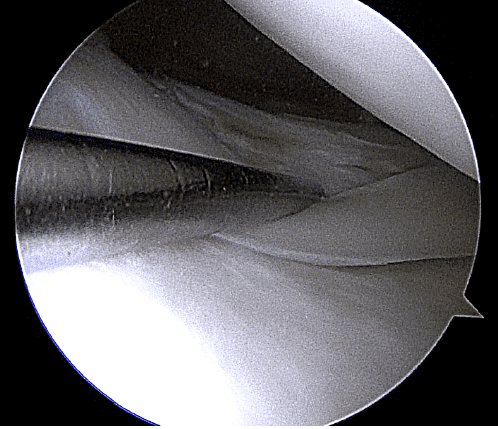
Figure 4:
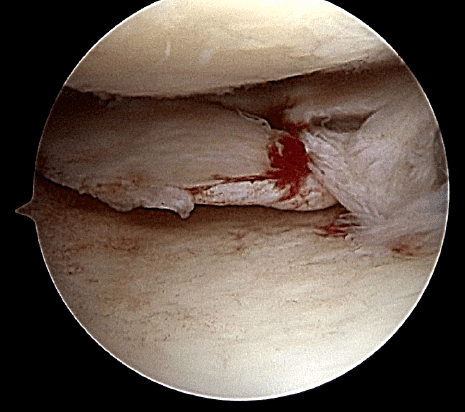
Figure 5:
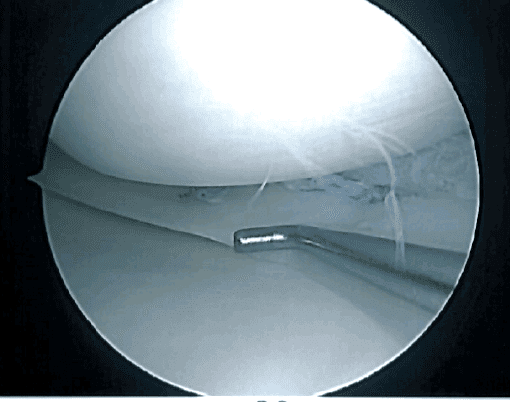
Figure 6:
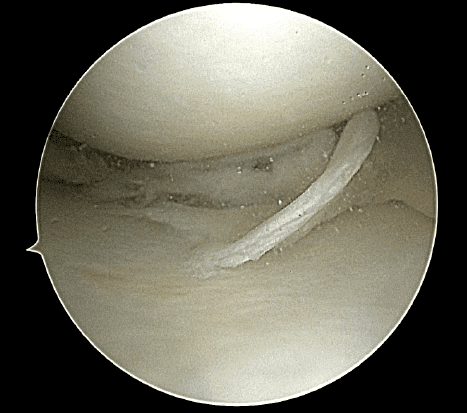
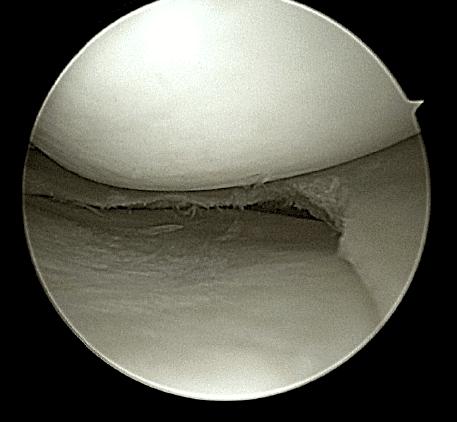
Find a Knee Surgeon
Our Board-Certified, fellowship-trained knee surgeons are experts at treating meniscus tears. One of our knee doctors will build a custom treatment plan to help you get back to doing the things you love doing.
Hoag Orthopedic Institute is ranked as one of the top Orthopedic Hospitals by U.S. News & World Report in 2021-2022. Contact Hoag Orthopedic Institute today to schedule a consultation with one of our knee surgeons.
Find a knee surgeon that treats meniscus tears. Call us at (949) 705-6493 to make an appointment.
-
 Returning to Boxing After Surgery Knee, Sports Medicine
Returning to Boxing After Surgery Knee, Sports Medicine"Procedure: Right Total Knee Arthroplasty When Brad retired nearly 20 years ago at age ..."
Read More -
 Back to Mobility and Me Knee
Back to Mobility and Me Knee"Procedure: Bilateral Total Knee Arthroplasty Seeing the world from the back of a Gold ..."
Read More -
 Back to Skiing Knee, Sports Medicine
Back to Skiing Knee, Sports Medicine"Procedure: Simultaneous Bilateral Total Knee Arthroplasty (SBTKA) – October 2016 ..."
Read More -
 Back to Gardening Knee
Back to Gardening Knee"Verna’s days are much more fruitful after having repairs to both knees. For the first ..."
Read More -
 Back to Golfing After Knee Replacement Knee
Back to Golfing After Knee Replacement Knee"Retired dentist Dr. Gregory Cramm and his wife, Cathy, enjoy going out for a nice ..."
Read More -
 Back to Racing Knee
Back to Racing Knee"Racecar driver Danny Thompson, 67, set the national land speed record at 406.7 mph in ..."
Read More -
 Back to Skiing and Snowboarding Knee
Back to Skiing and Snowboarding Knee"Rick Rengel, age 58, was having a great time speeding down a ski slope in Utah in ..."
Read More -
 Back to Cooking Knee
Back to Cooking Knee"“If I hadn’t had my knee replaced, I wouldn’t be out and about – I would be home in ..."
Read More -
 Back to a Family Christmas Knee
Back to a Family Christmas Knee"My wife, Lucille, was admitted to the Hoag Orthopedic Hospital, Irvine, California ..."
Read More -
 Back to the Golf Course Knee
Back to the Golf Course Knee"Shooting pain down the leg. Too painful to stand more than minutes. Sitting up to ..."
Read More

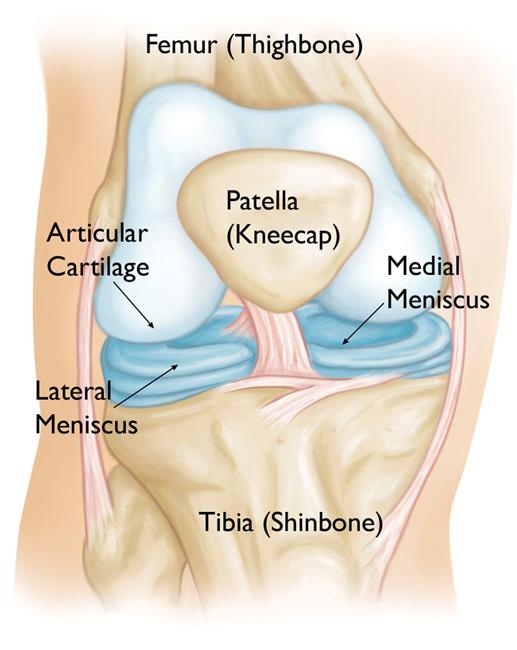
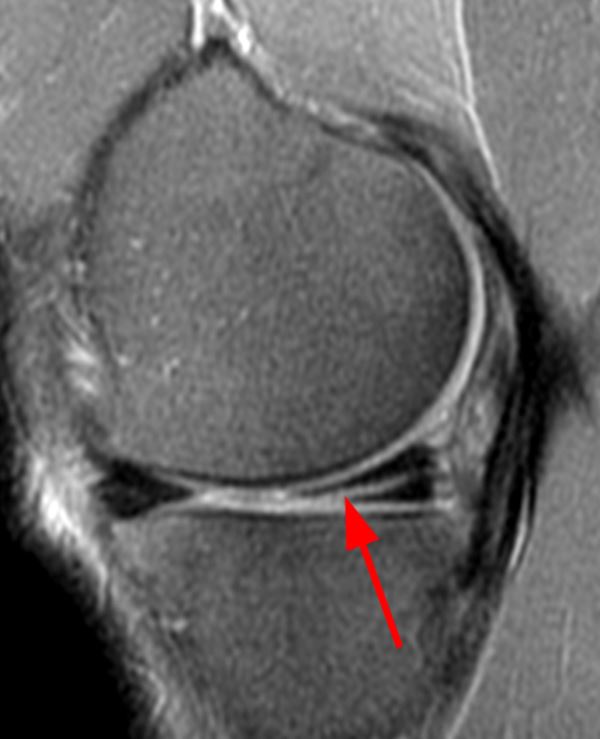
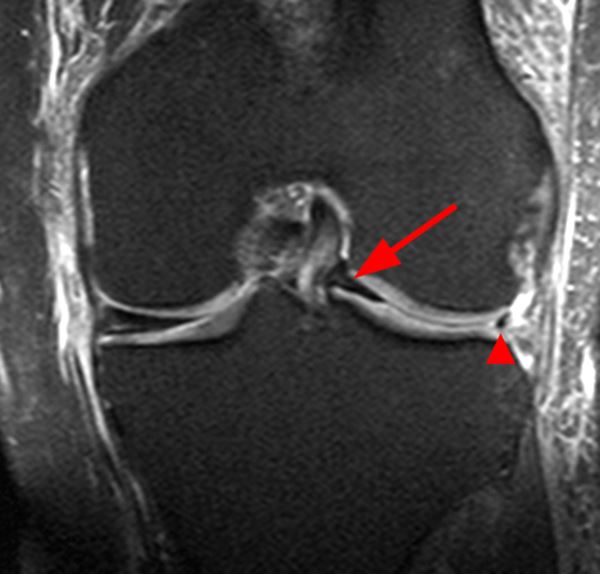












_20190109061103.png)